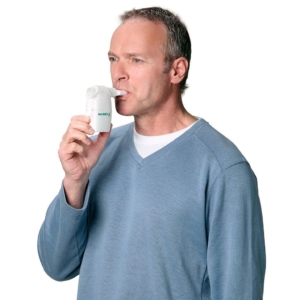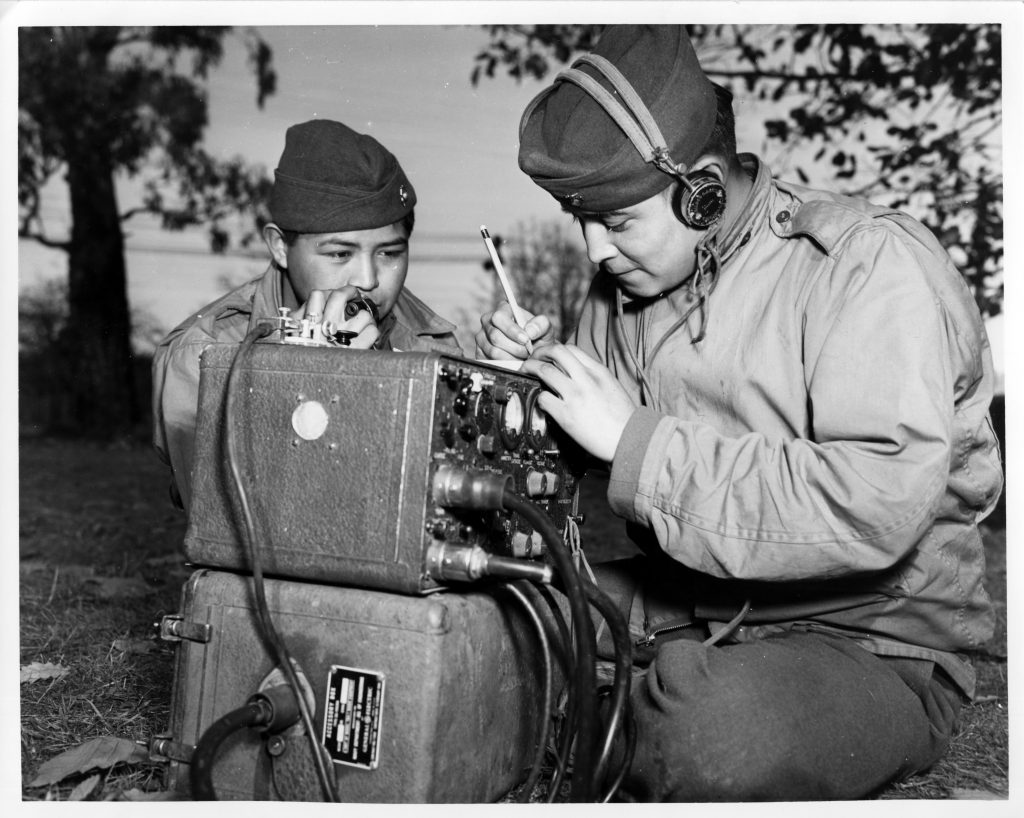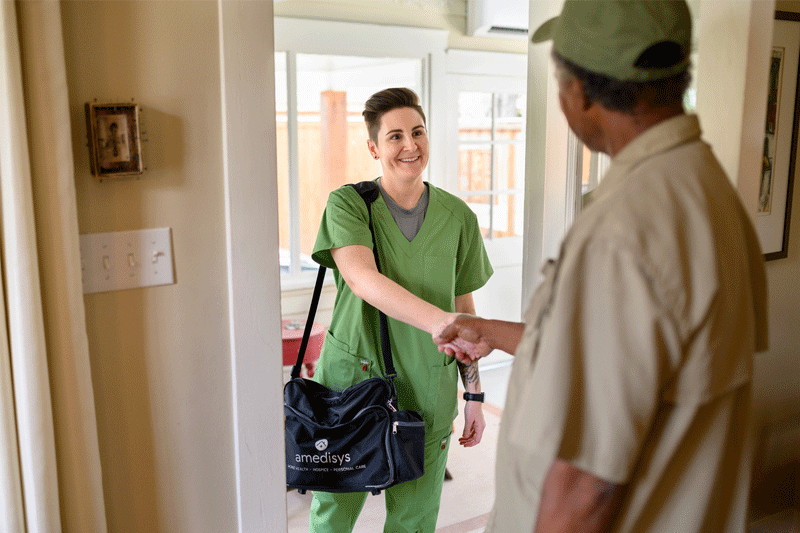Friday, May 31, 2024
If the Message Doesn't Get In, You Can't Use It
A big fat ZERO. That's the response that speech - language pathologists (SLP's) in home health gave to the 2023 ASHA Health Care survey, when they were asked, "are persons with the diagnosis of hearing loss, among the top five diagnoses on your caseload?". The assumption is that SLP's can contribute little to the management of communication problems, that a person with hearing loss faces. There's a dedicated profession for that: audiology, which began to require the doctoral degree for entry - level practitioners in 1998. Audiologists have training in and access to powerful technologies that help diagnose and (re)habilitate problems understanding oral language. SO - why are we even talking about hearing disorders and SLP, if we seldom get a referral for home health care of these persons?
First, hearing loss is often insidious, stealing away a person's independence for perceiving the world before the person understands what has happened. Hearing sensitivity can be altered by effects of lifestyle, of chronic disease, normal aging and other impairments which can leave a person robbed of the ability to recognize what is said to them.
Second, helping a person with a hearing loss to improve communication is not a simple process. If a person submits to hearing testing and has a mild to moderate problem, you may see either compliance with the recommendations, or an outright denial of any problem. If the person's hearing loss falls into the severe to profound range, following any rehabilitation plan is not only complicated by struggles with assistive technology, but also by the increased risk for cognitive impairment and for falls with worsening hearing. Only 20% of all persons who might benefit from use of technology like hearing aids actually use them. While the management of hearing impairment lies strictly outside the SLP scope of practice, the management of communication problems associated with hearing loss easily matches the skill set of the SLP.
For the present, many SLP's who want to help hearing - impaired persons will not get a referral to provide the service. Communication is not medically necessary? Regardless, if the person with hearing loss has access to a multidisciplinary team of professionals, each team member may take a role to help the individual communicate better. What follows is a modified "plan of care" for such a patient under the care of a team.
First, observe the patient's behavior in everyday settings with everyday activities. Does the patient require frequent repetitions or paraphrases of your comments or directions?
Second, help the patient obtain a hearing screening test if there hasn't been a recent test given. A screening test is designed to only answer one question: is there a problem? Two examples of hearing screenings you can do at home are: The National Hearing Test https://www.nationalhearingtest.org/wordpress/?page_id=2730 (free to AARP members annually; $12 to non-members), and the American Speech - Language - Hearing Association screener https://www.asha.org/public/hearing/hearing-screener/ (free to all, anytime). Another form of screening obtains the patient's own perspective, on how changes in hearing status affects daily functioning. An example of this screening assessment is the Hearing Handicap Inventory for the Elderly - Screening Form . Please see your SLP to obtain a copy of the assessment.
Third, recommend that your patient see their primary physician or healthcare provider, to share the test results. There is no one solution for hearing loss that meets all persons' needs.
Fourth, utilize communication strategies that you and the hearing - impaired person agree on, in your daily interactions - examples can be found at https://www.med.unc.edu/healthsciences/sphs/hcc/patient-resources/communication-strategies/ and https://www.ucsfhealth.org/education/communicating-with-people-with-hearing-loss
Since assistive technology for persons with mild to moderate hearing loss has become widely available, the "over - the - counter hearing aids" that are sold in Walgreens and Best Buy, as well as in audiology and some ENT physician offices, the responsibility of caring for one's hearing health falls upon the individual patient. Staying aware of one's hearing status and preventing hearing loss whenever possible is part of a total health regime.
I hope you've gained some new insights during National Speech - Language - Hearing Month! Keep on communicating.
Thursday, May 23, 2024
The Speech in Speech Therapy
Starting June 14 - try to see this film. If it's true to the first film, it is so true to the established theories of brain and mind! So true to emotions, and how they confound, enhance, cloud, distill and empower your thinking! Check it out.
Hello again! It’s the fourth installment of “National Speech – Language – Hearing Month, 2024”. If you’ve missed any of the previous posts, you can look back in the blog to catch up. The topic for this post is a fundamental one to the profession: disorders of speech, voice and breathing. They put the speech in speech therapy! These are the sub-specialties of the field, where I feel justified in wearing workout clothes and the latest "kicks" to a therapy session. This is our subspecialty, where we "speechies" feel we can run with the big therapist girls and boys!
Since evaluation and treatment of speech, voice and breathing disorders involves significant physical training, let’s first thank all our colleagues in associated medical and rehabilitative fields whose work contributes to patients’ improvements and healing. Physical therapists, occupational therapists, physical trainers, bodyworkers, massage therapists and other professionals help the patient move more purposefully, with more strength, faster and more accurately to meet their daily needs – including communicating and swallowing. Among speech – language pathologists surveyed for the 2023 ASHA survey, 12 to 61% reported that persons with these disorders were among the top five diagnoses in their caseloads. Impairments of speech and voice are among those for which medical consultation is highly recommended, so the speech - language pathologist earns "street cred" with evidence - based, individualized services provided these patients.
What would be some desired outcomes of treating these disorders? People whose speech is not easily understood might want to be more intelligible – that is, understood by most people they meet. Persons in treatment would also want a speaking rate that allows their listeners to understand the message. In addition, speakers want their message to sound natural, or like the speech of their listeners. Measuring how close a person is to achieving their outcomes, the speech – language pathologist measures the person’s speech loudness and its quality (Rough? Breathy? Strained? Weak?). How well the person coordinates breathing with the upstream components of speech – phonation, resonance and articulation – is often critical to design a care plan in these domains.
Tools commonly used with these patients to improve their speech, voice and breathing can run the gamut, from decibel meters that can give you real time loudness measurement; to breathing trainers, varying in degree from a straw in a glass of water for bubble blowing, to Aerobika, Acapella and Aspire EMST; to tracheostomy and ventilator assistive technology, that facilitate speech and swallow for persons w/ significant medical challenges; and to vocal amplifiers for persons with chronic limits in their respiratory power. The emphasis with these patients on quantitative scaling of behavior, e.g., vocal loudness in decibels, duration in seconds of sustaining a vocal tone, or the number of coughs that are heard within one minute - they all demand a special precision and focus by both the clinician, and the person served by that clinician.
If you want to understand what speech - language pathologists are talking about in their speech/voice/cough work, you need some familiarity with the terms they use in their own communication. For example, When good vocal hygiene is in play, you'll be more easily heard today. You'll hydrate, moderate, breathe just right, so all your words are outa sight! Or, a tracheoesophageal fistula = an unnatural connection between the trachea and the esophagus, allowing trapped inhaled air to be driven into the esophagus to produce speech. "TEP", "PMV", and "GRBAS" roll off the professional's tongue, but we're actually trying to communicate when we throw around these words. Let's make sure we connect with the people through use of meaningful words.
When There Is No SLP: Offer your patient a water break periodically during your session, if the patient's diet allows that. When your patients want to talk with you, or with family or caregivers present, help them maintain the best functional position for speaking - head and trunk elevated to at least 60 degrees. Maintain good eye contact with the patient, during the entirety of that conversation. If the patient can sustain enough attention, model the pronunciation of any words they might want to use.
On this Date in History: Little Debbie Sproul of Western Springs, Illinois, saw her first brood of emergent cicadas at a tree in her neighborhood, back in the summer of 2007. The 8 - year - old sprite loved the outdoors, but did not recognize the little wriggly newcomers to her world. Crawling really close, daunting Debbie got so close to the pile that SHE INHALED A CICADA LARVA! Debbie's Mother commented to the newspapers, "She ran in crying, and when she tried to explain what happened - she just wheezed and crackled from her mouth!". Eventually, first aid was provided and Debbie got her voice back.
Who Does the Speaking in Your Neighborhood?
Friday, May 24: Billy Strings, Americana music; Allstate Arena, Rosemont, IL
Friday, May 31: Tim McGraw, country music; Allstate Arena, Rosemont
Tuesday, May 28: Astrophysics Seminar - "Binary Accretion"; Paul Duffell, Northwestern University, Evanston, IL
A Note: Chronic cough treatment is a thing! With patients who have frequent coughing for more than eight weeks, and who might have a rough voice from the coughing episodes, speech - language pathology treatment can sometimes reduce or eliminate the behavior. Speech - language pathologists work in coordination with medical and allied health colleagues, to solve what are often complex cases.
Something You Can Use: The Voice Handicap Index - 10 Item scale is a brief self - assessment of a patient's voice, along functional, physical and emotional dimensions. Collecting VHI - 10 data may help you determine if a patient may be motivated to have a voice evaluation. Find the VHI - 10 scale at https://beverlyhillsvoice.com
Thursday, May 16, 2024
Code Talkers and Code Breakers
We're about halfway through the 2024 National Speech - Language - Hearing Month, and many of us are concerned now with safety and security. Worms in our brains! Tents on our campuses! Those books in our libraries! Those scoundrels holding public offices!! Much of this tumult in our lives is the product of miscommunication. Plainly, simply, comprehensively. The Native Code Talkers made miscommunication a battle tactic during World War II, by transmitting messages in their first languages that were opaque - untranslatable - to all but the most ingenious spies and well - equipped receivers who were listening. The converse of this perspective; that is, effective communication, relies upon how you construct and transmit your messages to be easily understood by your audience.
For example, healthcare systems have been for years among the biggest targets of cyberattacks by malicious persons. The rapid digital communication systems to which we've all become accustomed, whether for obtaining laboratory results, setting appointments at your physician's clinic, or reviewing and addending your electronic medical chart - that's short-circuited by a cyberattack. When the information required to keep a large organization, such as a medical center, a community of disparate individuals or the human body itself, is prevented from flowing to the places it's needed, the function of your organization breaks down, goes kerflooey and is a shadow of what's expected. As hospitals who are almost paralyzed by the hijacking of their information systems must resort to paper and face - to - face interactions, individual and group communication must compensate so that messages get through and the organization can function.
Speech - language pathologists are agents of organization, for anyone who has a problem communicating their needs, sharing information, maintaining social closeness or following conversational etiquette. In the 2023 ASHA Healthcare Survey, 80% of speech - language pathologists doing home health care reported that persons with language and communication problems were among the top five diagnoses in their caseloads. As we have with two prior diagnostic groups, we will break down impairments of language and communication. For example, the outcomes most persons with these disorders ask for, is for an improvement of their "communicative competence" (the four parameters in bold print, at the beginning of this paragraph). A person who has control of all these parameters has stability, like the four walls and ceiling of a modern home. For persons who have impairments of oral language use and have less functional independence in their communities, one successful outcome would entail increasing that function.
What tools are often used in evaluation and treatment of language and communication impairments? From the Bell and Howell Language Master, an almost archeological relic of World War II, language and communication therapy can now be contained in a tablet computer, e.g. the iPad. A commercially - available tablet loaded with commercially - available speech output software, offers now the advantages of a dedicated, customized speech generating device that might cost 5 - 6 times as much. The dominance of the smartphone in most of our lives, gives the communicatively impaired person access to multiple apps and avenues to communicate in everyday life.
A speech - language pathologist might use terms like aphasia - the impairment of language symbol usage - or anomia, that describes problems in finding the exact word you want to say. Taking turns: still another term, to indicate that communication is a transactional experience. You do something to get something, and even though one person in the transaction may not play the communication game the sa.e way - you interact. The strength of your interaction determines if your message is hard to understand (opaque), vague (translucent), or clear (transparent).
When There Is No SLP: Let your patient's family or caregiver help "translate" messages that you cannot: "when she does THIS, she means THAT". Communicate naturally when you are providing directions. Demonstrate what you want your patient to do or say, as necessary for each situation.
On this Date in History: Dr. Eric White loved enforcing rules behind the Americans with Disabilities Act, as a physician with his local health department in the early 1990's. One of his most favorite enforcement jobs was dropping in on fast - food restaurants, and attempting to order food from the pictorial menu. However, Dr. White saw the dilemna that many nonspeaking people can face. He was a picky eater, and when - for example - he might attempt to order a "Big Mac" as a nonspeaker who wanted the sandwich, he could not get across to the staff, that he didn't want special sauce; also, he wanted not two patties but one; he also wanted NO SESAME SEEDS, DARN IT!
WHo Does the Communicating in Your Neighborhood?
* The Pritzer Architecture Prize lecture, Illinois Institute of Technology, 5/16, Chicago
* Faulkner and Yoknapatawpha conference, July 21 - 25, Oxford, MS
A Note: Supported conversation strategies allow clinicians to work with patients with communication breakdowns e.g. stroke victims, so that the patients might use all their capacity to communicate. Information on Supported Conversation for Adults with Aphasia can be found at the Aphasia Insititue website: https://www.aphasia.ca/health-care-providers/
Something You Can Use: THe "Picnic" scene from the Western Aphasia Battery, or "Cookie Theft" from the Boston Diagnostic Aphasia Examination, are both black - and - white illustrations, that allow you a quick method to look at the patient's verbal expression skills.
Are we clear? See you next week, for part four of the review for National Speech - Language - Hearing Month.
Tuesday, May 7, 2024
Is it a WRAP?
First, just to say thanks, to all the persons from Italy who - according to the platform's data collector - reviewed this blog last week:
Di' la verità perché poi non è necessario avere una buona memoria (attributed to Jesse Ventura).
Welcome back to our coverage of National Speech - Language - Hearing Month! As is true about most of the posts you see in this blog, my perspective on the field comes out my current worksite: That's adult home health care. Those of us in CSD who, at least, skim our journals will note that home health has been getting a lot of recent exposure. Here's a partial list:
* JD Gray, "Regional Factors Influencing Home Health Care": https://leader.pubs.asha.org/do/10.1044/2024-0426-podcast-SLP-home-health-SDOH/full/
* Stephanie Watson, "Engaging Care Partners - including Reluctant Ones - in Home Health": https://leader.pubs.asha.org/do/10.1044/leader.FTR1.28072023.home-health-slp-aud.40/full/
* Tennakoom, Sampson, and Harley, "Pondering a Move to Home Health? Some Considerations": https://leader.pubs.asha.org/do/10.1044/leader.FTR1a.28072023.work-homehealth-slp-aud.50/full/
* Jennifer Loehr, "Is Home Health Care for You?": https://leader.pubs.asha.org/doi/10.1044/leader.OTP.23122018.38
The saga of home health SLP seems an acceptable lead - in for today's post, because we're often challenged by the cognitive (thinking) load - our burden of problems to solve, and focus that we have to maintain - brought to our workdays. In turn, many adults find that their skills for thinking have changed with illness or injury, so that 83% of speech - language pathologists surveyed for the 2023 ASHA Health Care Survey identify "cognitive impairment" as among the top five diagnoses in their caseload.
What are speech-language pathologists after, when they work with someone with cognitive impairment? Outcomes we're after can include: using cognitive processes for meeting everyday needs, or using cognitive strategies to compensate for depressed cognitive function. Still another outcome might read: utilize assistive technology to complete cognitive activities. While individual components of cognition (attention, memory, problem - solving) can be and are often directly trained in isolation by SLP treatment activities, it's often the end result of a cognitive intervention (problem-solving to get home, before parents discover you've taken the car without permission) that make the impression needed.
Some useful tools for persons working on their cognitive function include calendars or signage, to prompt a person to locate or initiate something; signalling devices that alert a person to focus on an event; hearing assistive technology, because information can't be used if it does not get into the brain; or digital platforms that allow the person to store and recall recent or future events.
Terms associated with the implementation of cognitive treatment might include spaced retrieval training, executive function, or WRAP (write down; repetitions or routine; associations; picturing). There are oodles of arcane terms about cognition, as there are in all levels of the sciences of managing behavior. The measure of how well you use scientific jargon, should include how easily you can share the concepts with the largest possible audience.
When There Is No SLP: Do a periodic review of what you've worked on with your patient, throughout the visit. That is, spot - check the effectiveness of your training and teaching you've done with your patient. If you can also provide a concise written outline of your review, your patients and their support persons have a reference to use for daily practice. Another perspective you can take on training your patient involves teaching activities as a strict routine - doing the sequence of activities at the same time, in the same way, every day of practice. The routine reduces the memory demands on the patient and support persons. Likewise, asking the patient to 'teach back' what you have taught them, - it helps you check how the patient consolidates memories.
On this Date in History: President Billy Moose had been feeling anxious between stops on his 1948 re-election campaign. He could not find his glasses, and it was suddenly time to begin his Chicago speech. A breeze off Lake Michigan helped calm the incumbent, towering above the crowd behind his outdoor podium. The President began delivering his text from memory for the massive crowd that began to surge forward, raptly anticipating every word. Suddenly, President Moose remembered where he had left his glasses, as the .22 pellet that had been fired from the crowd harmlessly pinged off the case in his coat pocket! The assailant was screaming while being carried away: "He's a HORRIBLE PIANO PLAYER!"
Who Does the Thinking in Your Neighborhood?
Tues, May 14: Trivia Night, Dave and Buster's, Schaumburg, IL
Daily: Wordle, New York Times or https://nytimes.com
Fridays, from 1/21/22: 4 free games, U.S. Chess Federation, Indianapolis, IN
May 11 - June 1: Aerial Drone Competition, REC Foundation, various sites, https://www.robotevents.com/robot-competitions/adc
A Fact: The world - famous Monopoly board game may have had its roots in Chicago. For readers of this blog who have fond memories of wheeling, dealing, scheming and dreaming with actual PLAY MONEY, read a description of the game's likely precursor at https://interactive.wttw.com/playlist/2023/02/20/lizzie-magie-monopoly
Something You Can Use: The Clock Drawing Test is a simple assessment of cognitive function, easily administered with simple tools. Refer to https://www.sralab.org/rehabilitation-measures/clock-drawing-test for details.
See you next week!
Subscribe to:
Comments (Atom)





















